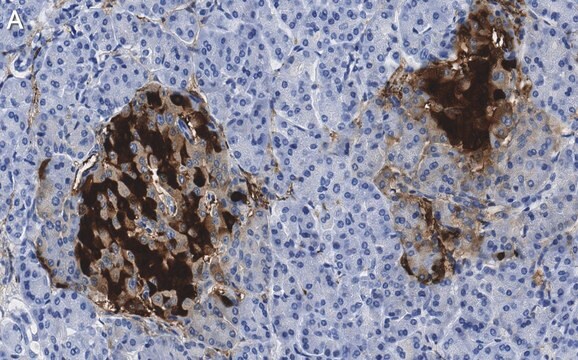G7900
Monoclonal Anti-Glycophorin A (α) antibody produced in mouse
ascites fluid, clone E4
About This Item
Productos recomendados
biological source
mouse
conjugate
unconjugated
antibody form
ascites fluid
antibody product type
primary antibodies
clone
E4, monoclonal
contains
15 mM sodium azide
species reactivity
human
technique(s)
agglutination assay: 1:800 using human erythrocytes
flow cytometry: suitable using bone marrow nucleated cells
indirect immunofluorescence: suitable using bone marrow nucleated cells
western blot: suitable using extracts of human red blood cell ghosts
isotype
IgM
UniProt accession no.
shipped in
dry ice
storage temp.
−20°C
target post-translational modification
unmodified
Gene Information
human ... GYPA(2993)
Specificity
Immunogen
Application
- agglutination assay at a working dilution of 1:800 using human erythrocytes
- flow cytometry using bone marrow nucleated cells
- indirect immunofluorescence using bone marrow nucleated cells
- western blot using extracts of human red blood cell ghosts
Biochem/physiol Actions
Disclaimer
¿No encuentra el producto adecuado?
Pruebe nuestro Herramienta de selección de productos.
Storage Class
10 - Combustible liquids
wgk_germany
nwg
flash_point_f
Not applicable
flash_point_c
Not applicable
Certificados de análisis (COA)
Busque Certificados de análisis (COA) introduciendo el número de lote del producto. Los números de lote se encuentran en la etiqueta del producto después de las palabras «Lot» o «Batch»
¿Ya tiene este producto?
Encuentre la documentación para los productos que ha comprado recientemente en la Biblioteca de documentos.
Nuestro equipo de científicos tiene experiencia en todas las áreas de investigación: Ciencias de la vida, Ciencia de los materiales, Síntesis química, Cromatografía, Analítica y muchas otras.
Póngase en contacto con el Servicio técnico